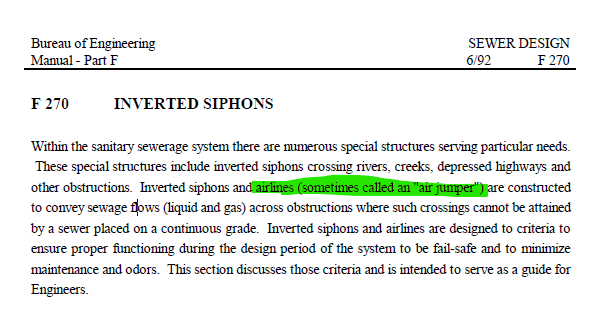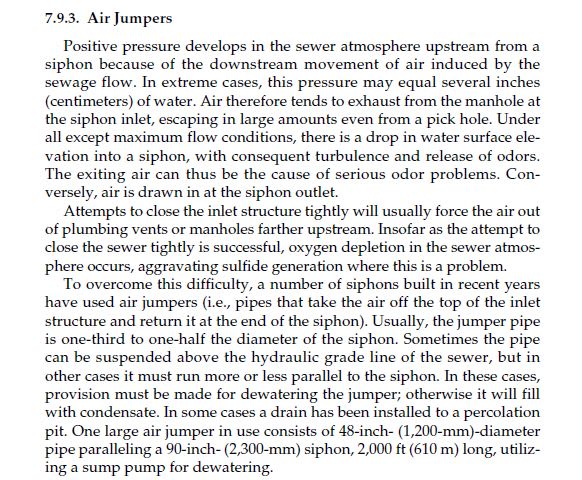JoelTXCive
Civil/Environmental
We are providing a structural design fee estimate for an inverted siphon that will go under a roadway or stream. From the structural point of view, it's basically just a couple buried junction boxes.
We have been provided a go-by project to help us work up a fee. I have studied the go-by plans, and I'm curious about the fluid mechanics of the siphon.
See attached...
Questions......
[ul]
[li]What does the separate 'Air Bypass' line do? I've googled a bunch of inverted siphons and do not see this line? If you are concerned about the primary siphon lines getting vapor locked wouldn't you have direct vents or relief pipes connected directly to them? How does a secondary independent line help?[/li]
[li]The 'Air Bypass' line has a rope in it. My assumption is that this rope is there to pull a pig or other cleaning device through the line? If it's just an air line, then why would it get clogged? Maybe it is truly an overflow line?[/li]
[/ul]
What do you think? I've seen existing inverted siphons on roadway underpass projects; but I've never been involved in the initial design before.
We have been provided a go-by project to help us work up a fee. I have studied the go-by plans, and I'm curious about the fluid mechanics of the siphon.
See attached...
Questions......
[ul]
[li]What does the separate 'Air Bypass' line do? I've googled a bunch of inverted siphons and do not see this line? If you are concerned about the primary siphon lines getting vapor locked wouldn't you have direct vents or relief pipes connected directly to them? How does a secondary independent line help?[/li]
[li]The 'Air Bypass' line has a rope in it. My assumption is that this rope is there to pull a pig or other cleaning device through the line? If it's just an air line, then why would it get clogged? Maybe it is truly an overflow line?[/li]
[/ul]
What do you think? I've seen existing inverted siphons on roadway underpass projects; but I've never been involved in the initial design before.


